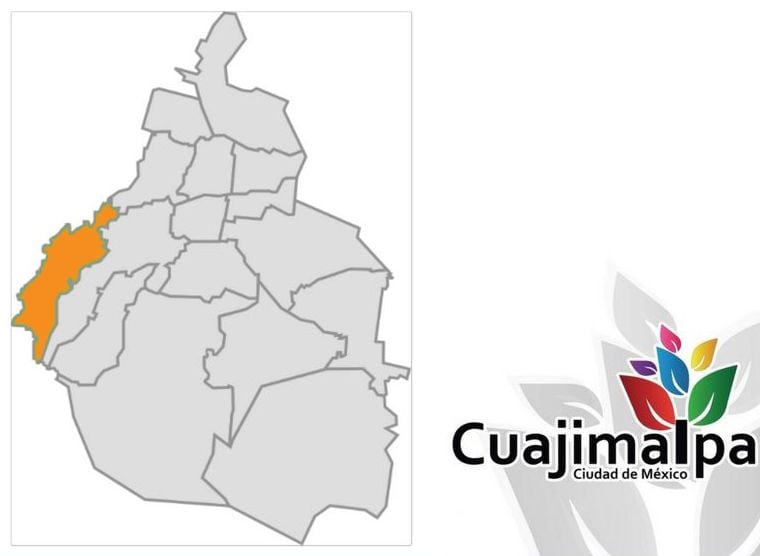
Mexico City is full of corners that were large towns during the pre-Hispanic era, such is the case of the Cuajimalpa mayor's office, because before being the place full of buildings, offices and parks, it was inhabited by the Tepan people, a very important culture in pre-Columbian times associated with the Otomi people.
Before continuing to talk about the beginnings of this place, it is important to mention that according to the National Institute for Federalism and Municipal Development (INAFED), Cuajimalpa comes from the Nahuatl word Cuauhximalpan which means “on wood chips” or “place where wood is carved or carved”.

The origins of this demarcation date back to 1342 when the Tepan culture came to be established in the area and began to form its political, economic, social and, of course, cultural organization. Because the headquarters of the leader of this group (Tezozómoc) was in Azcapotzalco, the administrative control of the former delegation was in that place, to which they had to pay tribute with their products and their work.
However, the rule of Tezozomoc ended in 1427 because the Mexican Empire succeeded in subjugating the inhabitants and establishing their reign. With the help of the Triple Alliance formed by the Lordships of Texcoco, Tenochtitlan and Tacuba, total control of the site was established.

Later, when Hernán Cortés arrived and the clashes against the Mexicas began, the territory became a strategic point, since due to its location far from the Aztec capital, Spanish troops took refuge there after the army was severely affected by the battle of the “sad night” on 30 June 1520.
Some time later, when the Conquest of Tenochtitlan had already been completed, Cortés founded the towns of Santa Rosa and Santa Lucia. He also highlighted “the importance of some existing peoples such as Cuauhximalpan, San Mateo Tlaltenango, Chimalpa and Acopilco, adding a Spanish name to them along with the indigenous one.”
It was one of the most attended sites during the times of New Spain, as the Spanish army used to cross the Mexico-Toluca road, so the Spaniard always ensured that the geographical characteristics were in optimal condition. Similarly, it promoted and promoted agricultural and livestock settlements.

It should be noted that according to information from the Cuajimalpa mayor's office, throughout the colonial era “it was a small town of woodcutters and charcoal makers due to the extent of its forests that provided various services to the Spanish Crown”.
Due to the beginning of the work of evangelization by the Franciscan friars, the Parish of San Pedro Cuajimalpa was built, one of the most important and well-known symbols of colonial architecture of the mayor's office. Over time, the temple continued to be modified and it was until 1925 that more elements were added to the building.
The Monte de las Cruces also stands out because it was there that the priest Miguel Hidalgo settled in the time of Independence. INAFED even points out that in the 19th century this place was the “den of insurgents and a hiding place for bandits, the place of assaults and cowardly murders, such as those of Santos Degollado and Leandro Valle”.

The development of the area came after the 1985 earthquake, since due to the great damage suffered by the center of CDMX, the decentralization of services to the west and south began, it was at that time that the former delegation became “an emerging development pole with the establishment of large consortiums” that later became the would make it a highly attractive space for real estate investment.
The mayor's office is currently recognized for housing the Desierto de los Leones National Park, La Mexicana Park, the Pedro Infante Cultural Center, among many other places. It covers a total of 80.95 km² with a population of 217,686 inhabitants, with 52.2% women and 47.8% men according to the latest INEGI census.
KEEP READING:
Últimas Noticias
Debanhi Escobar: they secured the motel where she was found lifeless in a cistern
Members of the Specialized Prosecutor's Office in Nuevo León secured the Nueva Castilla Motel as part of the investigations into the case

The oldest person in the world died at the age of 119
Kane Tanaka lived in Japan. She was born six months earlier than George Orwell, the same year that the Wright brothers first flew, and Marie Curie became the first woman to win a Nobel Prize

Macabre find in CDMX: they left a body bagged and tied in a taxi
The body was left in the back seats of the car. It was covered with black bags and tied with industrial tape
The eagles of America will face Manchester City in a duel of legends. Here are the details
The top Mexican football champion will play a match with Pep Guardiola's squad in the Lone Star Cup

Why is it good to bring dogs out to know the world when they are puppies
A so-called protection against the spread of diseases threatens the integral development of dogs




